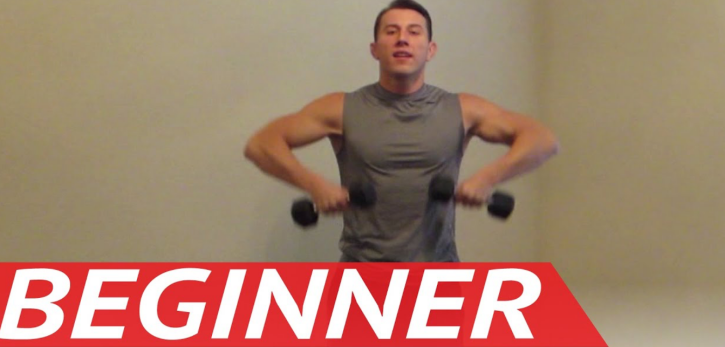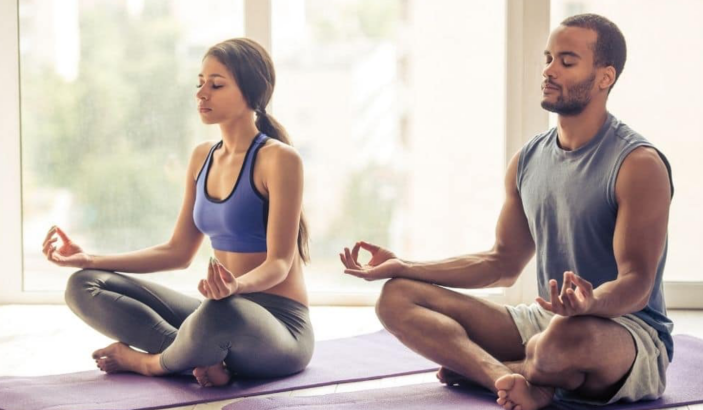
Home workouts are all the rage these days and for good reason. They’re super convenient, save you a trip to the gym, and let you sweat it out at your own pace. Especially if you’re just starting out, working out at home can ease you into a healthy routine without the pressure of public spaces.
First things first, let’s talk about your workout space. You don’t need a lot of room – a corner in your living room or bedroom can work just fine. Just make sure there’s enough space to move around freely. A yoga mat, some small weights or resistance bands, and a towel for wiping off sweat can make a big difference.
When it comes to gear, comfort is key! The right workout shoes and a breathable outfit can motivate you to keep going, especially when the going gets tough. Investing in these basics can make your workouts safer and more effective. Don’t forget a water bottle to keep yourself hydrated along the way.
Starting a new habit, like a workout routine, is often the toughest part. Consistency is hugely important. Set a schedule that fits your life. Maybe you’re a morning person, or you prefer an evening wind-down session. Whatever works for you, stick to it. Motivation can come from anywhere – favorite tunes, a virtual trainer, or even a workout buddy. Remember, it’s all about setting yourself up for success without the stress.
Top Full-Body Beginner Exercises: Build Strength and Endurance
Building a solid base is what matters most when you’re getting into fitness, and full-body exercises are the way to do it. These moves don’t just target one group of muscles; they get your entire body moving and engaged.
Bodyweight exercises are the perfect starting point. They don’t require any fancy equipment and can be done anywhere, anytime. Squats, lunges, and push-ups are classic examples. These may seem simple, but they pack a punch when it comes to developing strength and endurance. The key is to maintain proper form to get the most out of each move and avoid injuries.
Before jumping into the nitty-gritty, make it a habit to warm up. Just 5 to 10 minutes of light cardio or dynamic stretches can prepare your muscles and prevent strains. And don’t ignore cooling down afterwards; it helps in relaxing your muscles and aids recovery.
Balancing your exercises is also important. Mix it up with some planks and jumping jacks. Planks are incredible for building core strength, and jumping jacks are great for keeping things lively while pumping up your heart rate. Listening to expert tips, or following trusted online resources, can guide you to combine these exercises effectively.
Cardio Workouts Made Easy: Improve Fitness Anytime
Cardio workouts are your best ally for boosting heart health and burning calories. The great part about cardio is its flexibility—you can do it anytime, anywhere, without any need for expensive equipment.
For those just starting, simple routines can be life-changing. Walking briskly around your neighborhood or up and down stairs at home can be effective. Get your dance on with some fun dance workout videos available online—it’s a great way to break a sweat and have fun at the same time.
Low-impact cardio is perfect if you’re looking to ease into things. Step-ups, swimming, or even riding a bike can build your endurance without putting too much strain on your joints.
To keep the fun alive, try exploring different cardio apps and online resources. Many offer guided sessions that can make your workouts more interactive and help you stay on track. Plus, tracking your progress with these apps or by keeping a fitness journal can be super motivating. Celebrate those milestones, no matter how small—they’re all important parts of your fitness journey.
Yoga and Stretching for Flexibility, Balance, and Stress Relief

Yoga isn’t just about flexibility—it’s about balance, control, and stress relief, making it ideal for your home workout routine. If you’re new to yoga, it offers a fantastic way to unite mind and body while also enhancing physical health.
Start with basic poses like the Mountain Pose, Downward Dog, and Child’s Pose. They’re great for beginners as they build a foundation and improve balance without overwhelming the body. Find a quiet corner, roll out a yoga mat, and you’re ready to go.
Stretching is just as crucial, not only to keep you limber but to prevent injuries. A regular stretching routine ensures that your muscles are strong and flexible, which is vital for any type of physical activity.
Yoga isn’t just about movement—it’s also about mental well-being. Taking time for mindfulness and meditation during your practice can dramatically boost your mental clarity and reduce stress. Even a few minutes a day can offer a noticeable increase in focus and calmness. Explore guided meditation apps or online classes to find what suits you best.

Hello!
I love how approachable this article makes starting a workout routine! As a beginner, it’s often overwhelming trying to figure out where to start, and these tips really break it down in a way that makes it feel much less intimidating. I’m definitely going to try some of these routines—especially the bodyweight exercises since I don’t have a ton of equipment and want to keep things simple.
I appreciate how the article emphasizes starting slow and gradually increasing intensity, as it’s easy to get excited and then end up exhausted. Do you have any advice on how to make sure I don’t overdo it in the beginning? I want to stay motivated and not burn out too quickly. Also, how do you track progress in the beginning stages to keep yourself encouraged?
Would love to hear your tips!
Angela M 🙂
It’s great to hear that you found the article so approachable! Starting slow and building up gradually is definitely the way to go. To avoid overdoing it, try setting realistic goals and focusing on consistency over intensity—starting with just a few workouts per week and gradually increasing as your body adapts. Rest and recovery are just as important as the workouts themselves, so make sure to listen to your body and take breaks when needed.
For tracking progress, keeping a simple journal or using a fitness app can be really motivating. Noting small wins, like completing an extra rep or feeling less sore after a workout, can help you stay encouraged. Even taking progress photos or tracking how you feel energy-wise can be a great way to see improvements over time. Stay patient, enjoy the process, and most importantly—have fun with it! ????????